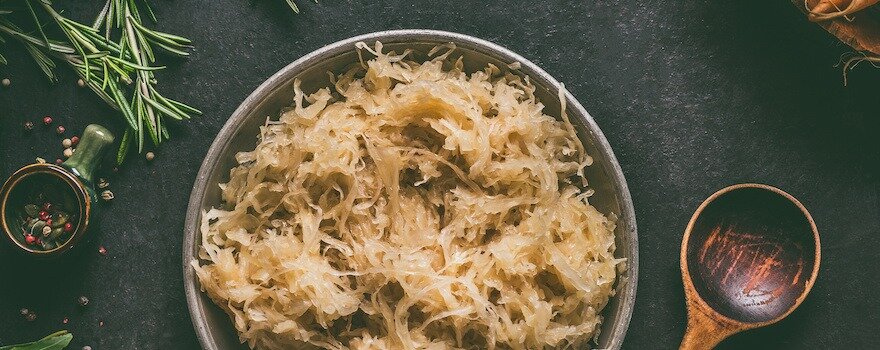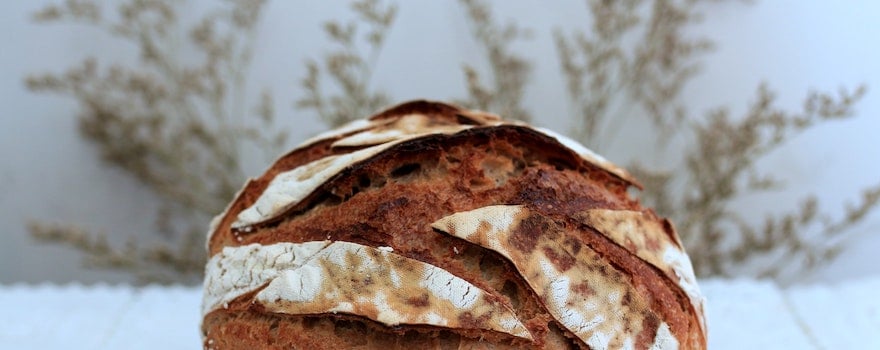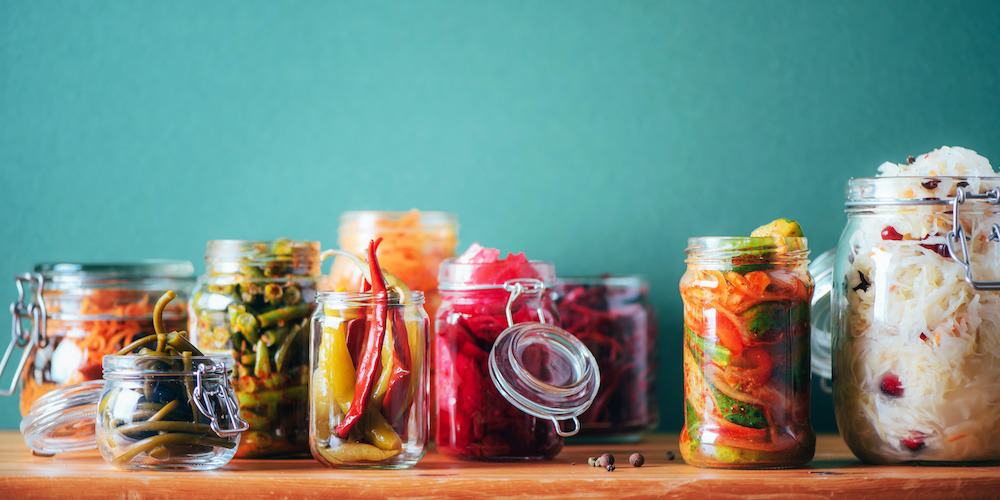Fermentation is a process during which microorganisms such as bacteria or yeasts transform the carbohydrates in food into acids, gases, or alcohol. Wine, for example, results from the fermentation of grape juice sugar under the action of yeasts.
During lacto-fermentation (lactic fermentation), the carbohydrates present in foods are transformed into lactic acid by the lactic bacteria they contain. Lactose intolerant individuals, don’t shun all lacto-fermented products! The term lactic simply refers to the fact that lactic acid was first isolated from milk.
Also read the (PODCAST #1): The secrets of fermentation
Here are 4 lacto-fermented foods to introduce to our plates. See the list for more details on lacto-fermentation and its benefits.
1. Sauerkraut

Sauerkraut is one of the most consumed lacto-fermented foods! Cabbage is used, to which a brine (a mix of water and salt) is added. Rich in probiotics and vitamin C, it contributes to the proper functioning of the immune system. It is said to have protected Captain Cook’s crews against scurvy.
How to consume it: sauerkraut can be found raw or cooked. To make your own sauerkraut, ferment cabbage with brine in a sauerkraut pot. It can be served with fish (haddock, salmon) and shellfish to make a seafood sauerkraut, or enjoyed in salad form.
2. Kefir

Kefir is a drink originating from the Caucasus. There is milk kefir made from animal milk with added yeasts and ferments, and fruit kefir made from fruits, water, sugar, and kefir grains. A true concentrate of lactic bacteria, kefir has a probiotic effect as shown by this study.
How to consume it: milk kefir is available in many stores. To sweeten its slightly sour taste, you can add natural syrup or honey. Kefir powder or grains are also available to make your own beverages.
3. Natural Sourdough Bread

Natural sourdough is obtained from cereal fermentation. Traditionally, it is made from wheat or rye flour. After adding water and salt, fermentation begins. Fermentation may produce antioxidants and prebiotic compounds, as suggested by this study.
How to consume it: it is recommended to consume sourdough bread made from organic flours. The preparation starts with a “starter” made from water and flour. Then you feed the preparation with a mixture of water and flour. The mixture will start to bubble and give off a tangy smell.
4. Miso

Miso is a key ingredient in Japanese cuisine, made from fermented soy paste. Soy miso is a complete source of plant proteins. Its fermentation accompanies the increase in probiotic populations, promoting healthy digestion.
How to consume it: its taste is described as umami (the fifth taste). It can be found in Japanese grocery stores and organic shops. It can be used to season meats, soups, broths, or wok dishes.
Lacto-fermentation, bacteria that transform sugars
What is lacto-fermentation?
Among the foods suitable for lacto-fermentation, you’ll find most vegetables, like the famous sauerkraut! Fruits are used less frequently. Indeed, you need to appreciate their taste after lacto-fermentation, which is slightly vinegary and salty. Fermented dairy products like kefir are another example of lacto-fermented products. Grains can also undergo this type of transformation (sourdough for bread).
Fish is also a good candidate. This is the case for nuoc mam sauce, widely used in Asian cuisine, which comes from the fermentation of fish in brine (a mixture of water and salt).
During lacto-fermentation, the lactic bacteria naturally present on the surface of foods will consume the sugars and transform them into lactic acid. This reaction leads to an increase in the lactic bacteria population and an increase in the acidity of the environment. This action occurs in an oxygen-free environment.
What are the main benefits of lacto-fermentation?
Lacto-fermentation is a remarkable reaction! Indeed, it increases the amount of certain nutrients in foods. This study on the nutritional quality of fermented bitter melon and fenugreek leaves shows an increase in vitamin C and vitamin B12 compared to unfermented vegetables.
Lire aussi l Où acheter des probiotiques ?
During lacto-fermentation, populations of lactic bacteria increase in foods. This forms a reservoir of probiotics (good bacteria) beneficial to our microbiota. These bacteria have many benefits, such as strengthening the immune system or having an anti-inflammatory role.
Read also 12 prebiotic foods: the best fibers to boost our microbiota health
Lacto-fermentation makes foods more digestible. For example, it reduces the amount of lactose in milk kefir. Additionally, the fibers in lacto-fermented vegetables are like predigested by lactic bacteria, making them more easily absorbed by the body. By lacto-fermenting vegetables rich in prebiotics, we provide the body with fibers that fuel our good intestinal bacteria.
Lacto-fermentation, what precautions to take?
Lacto-fermentation requires certain precautions. It’s important to thoroughly clean your hands, use utensils that seal tightly, and adhere to fermentation times. Experts can support you in preparing your recipes.



